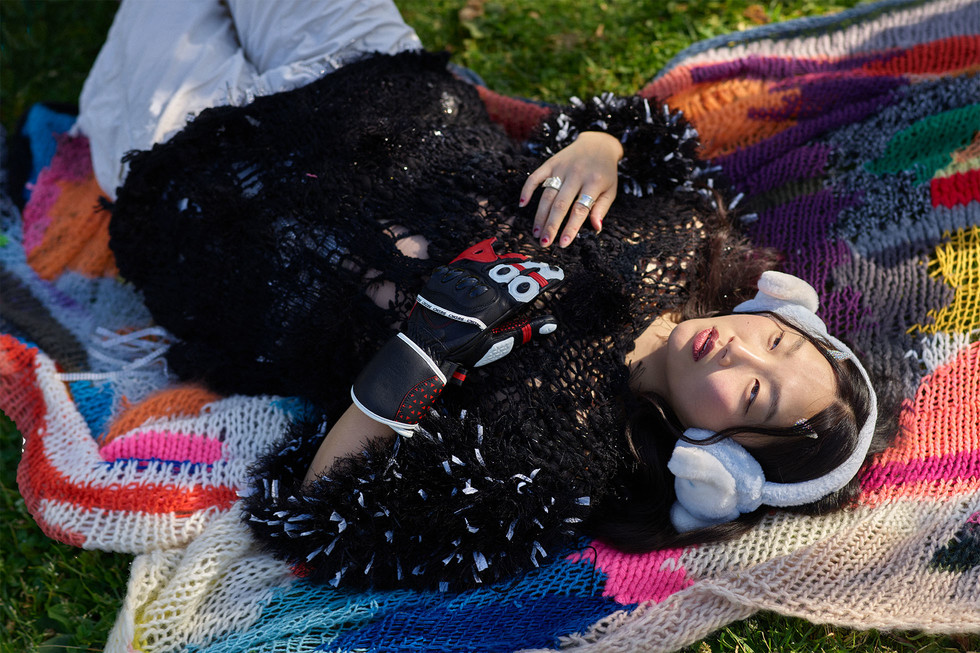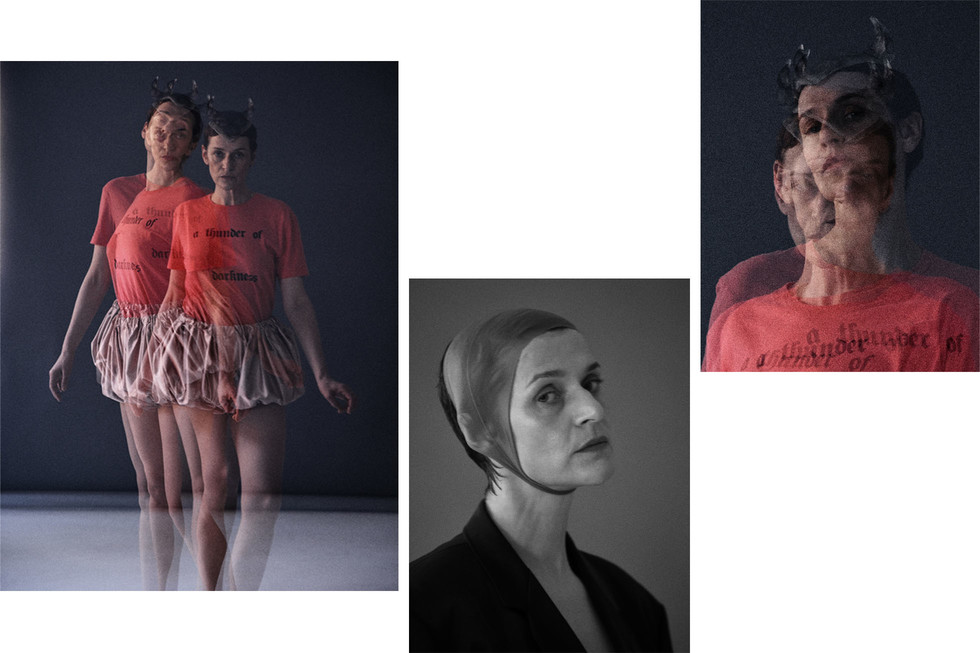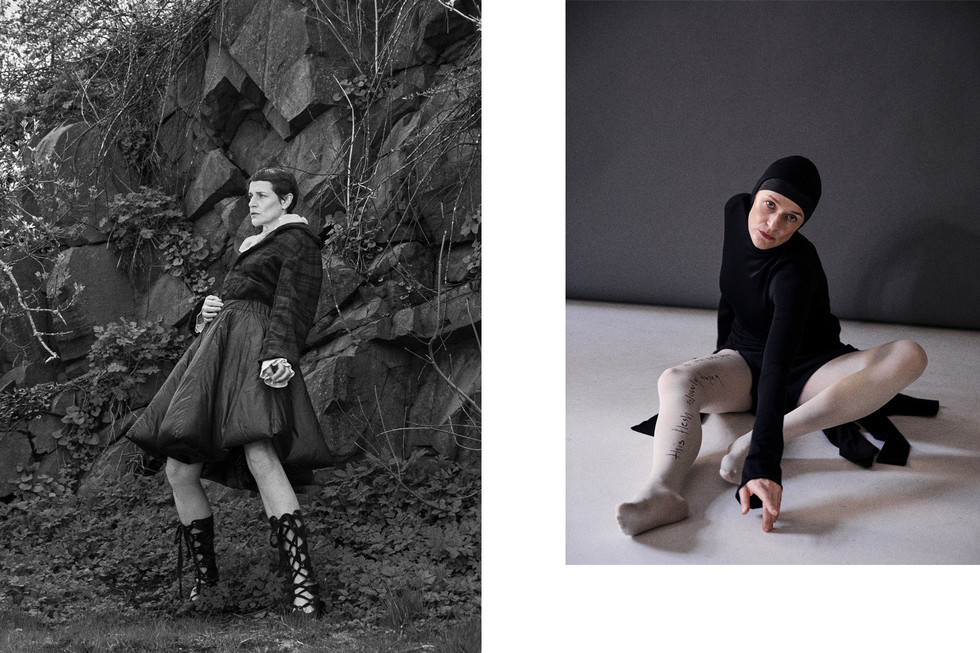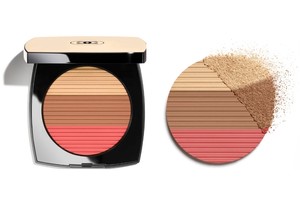Audrey Nuna: A Journey Through Music, Fashion, and Creative Exploration
Written by Josie McNeill by Sandra MyhrbergBefore finding her favorite bands and writing her own songs, Audrey Nuna had her voice. It was her voice and singing that made her fall in love with music, not the other way around. The American singer and rapper started singing when she was around seven or eight years old through auditioning for musicals and choirs. By the time she turned 17, she was recording and releasing her own music. She started working with her producer Anwar Sawyer when she was still in college and signed her record deal with Arista records at age 20.
The now 25 year old released her most recent single “Jokes on Me,” an ethereal, electronic track, on May 3, and is currently gearing up for her sophomore album. Audrey talked to Odalisque about the cinematic inspirations for her sound, her fashion collaborations, and her hopes for the music industry.
What inspired you to pursue a music career?
Musically I come from a place of just loving to sing. It's my first love when it comes to music. People like Celine Dion and Whitney Houston, these diva singers who I grew up idolizing, played a really big part in just pushing me to become a musician. But I feel like I've just been organically doing it my whole life, and it's somehow become a career so I feel truly grateful for that, honestly.
How did you develop your sound then? It’s really interesting that Celine Dion was one of your biggest inspirations because her music is so different from yours.
She’s more than a music inspiration, I would say. She's one of the people who as a kid, like a very young kid, I’d watch YouTube videos of singing, and it really pushed me to be a better singer. In terms of musical inspiration and influence sonically, I didn't grow up listening to that much music to be honest. But when I started listening to more of my own music and finding my own taste in high school, it was things like listening to Radiohead and Childish Gambino, Missy Elliott, Beastie Boys–just the kind of people who forge their own sound and their own path that really inspired me and inspired my producer. I take influence from a lot of different places. I can't necessarily cite main influences. I think I just take what I like from basically everything in my life; it doesn't even have to be music. I definitely take inspiration from films, from fashion, just anywhere and everywhere–things happening in my life.
Did you have any specific music or movie inspiration for your song “Joke's On Me”?
For the music side, we as a group loved Don Toliver. We loved this combination of very r&b-esque chords, which I feel like you know, Anwar really brought on the guitar. Then this idea of intense and punchy 808s came from my other producer Miles Aside. So this collision of worlds from the beginning of that trip–we were actually in Joshua Tree making a lot of music–we discussed this idea of if Stevie Wonder and Lil Uzi had a [musical] baby. So I think that was kind of the through-line for a lot of the songs we wrote.
What was the process of writing “Joke's On Me”? How did you blend those two sounds, the silky r&b and punch 808s, together?
It came together really fast. It was literally me and then three of my friends just sitting in a dark room somewhere in Joshua Tree. The melody was actually a one-take. We had the melody sitting there for a long time, but we were kind of overlooking it, trying to think of other things and then we came back to the very first take. From there we decided that this is obviously what the song is supposed to be, and I just wrote it out. Honestly, it was one of the quicker ones because I really take time with my lyrics to make sure it's good and rewrite and all those things. For this one, it was just a visceral experience of what I feel like saying. Maybe even some lyrics don't make perfect, perfect logic sequential sense. But I think that for that song and that experience of making that song, that experience of being in Joshua Tree with the four of us, the whole thing was just going based on energy and going based on feeling so the song came together really easily in that way.
How was that process of putting that song together and making your recent songs different from putting together your first album ‘a lA Liquid bBreakfast’?
For this project, we tried to do trips and travel with a little bit more intention than we did for the first project. The first project was very much a hometown project. Well, it was really my producer's hometown because we worked out of his space. I was still living at home for a lot of it or going to school at NYU. So there was just this home and groundedness to it, I would say. The second project is more wild wild west. That was the feeling for me because I had just moved to a new city–LA. I was still figuring out what my actual creative, safe space is that I can record and feel comfortable. For that reason, we did a lot of searching. We traveled to Joshua Tree. There are literally some vocals that were recorded in random places in the states just because I was on tour for a little bit of time. Some ideas and concepts were conceived in places like Tokyo because I was able to travel to places like that as well. So I think this new project was much more migrant, in my view of the word. It took place a little bit all over the place. It was more scattered, whereas the first project was very central to home and central to a safe place. I think for that reason, the first project has a sense of innocence and a sense of just a desire to go explore the world whereas the second project has the sense of the world is a crazy place and processing that information. I would say that's probably the main difference.
That's cool. Did that traveling aspect of making the music inspire the outer space aesthetic of your new song?
I feel like that was something that really came from the director of the music video to be honest. Like we kind of came up with the concept together. But actually now that I do think about it, I do think that this idea of outsiderness, which is very big in all my music, with this idea of landing in a new place for the first time, is definitely one of the central concepts we wanted to start with the video. I shot “Locket” and “Joke's On Me” within the same timeframe. But for both of those videos, what creates a villain and what makes somebody feel so unfamiliar with the world that they become a bad person was kind of the question that we asked. So I think with the “Joke's On Me” video, it was a prelude to the idea of, you know, landing in that foreign place for the first time or getting to that foreign place for the first time and not knowing what to expect. And that's probably why the video came to be the way it is.
I saw that you also released a corset along with “Joke's On Me”. How did that collaboration come together?
I worked with this amazing digital fashion collective called Syky and the really great designer Fanrui Sun. It just came through, honestly, meeting them and them being very supportive of my project. I was also very curious about digital fashion. I proposed to them as a theme for the design concepts, this idea of glamor and fashion almost being a defense mechanism. Which, interestingly enough, was definitely one of the thoughts we had on making that video as well. So we wanted to illustrate something beautiful, something elegant, something that can be worn at places like a gala, but still have this sense of warrior defense. We tried to find this middle ground. A lot of the songs I've written and a lot of the themes that I've been exploring with this upcoming album are just this idea of nothing is as it seems, and sometimes you find yourself in places of glamor, but you feel isolated. So I think that with this capsule, really the aim was to explore that and show that visually.
You also dress really cool in your Instagram posts, so I was wondering what inspired your fashion aesthetic?
Honestly, there are so many different things, but I would say a lot of elderly like grandmas and grandpas dress really fly, especially in New York. Living in New York was hugely inspiring to me on the fashion side. Just the sense of freedom that comes with seeing people and how they dress in the city. In a city as, you know, sometimes as brutal as New York, being an individual is the least of your fears in a way. Also, I'm inspired by a lot of Industrial Tech where a lot of very practical uniforms are created for a specific purpose. I think I find and gravitate towards them as something that I find stylish, whether it's construction workers or handymen or plumbers, even like just tactical gear. All those things are really inspiring to me.
How do you think music and fashion go hand in hand?
I feel like all creative disciplines are actually the same at the core. Just this idea of combining different flavors, which is why I also really love and respect chefs, because I feel like that is the most primal form of creativity in a way. They really tickle the same part of the brain. They really exercise the same part of the brain. It's all about just combining the things that make you you, which maybe traditionally we've been taught are not supposed to be together. So this idea of ignoring the rules and just bringing together all the things that you love exists both in music and fashion.
On your Instagram in early February, you made a post about how music has become a medium more for profit than creativity, and I was wondering if you could elaborate a bit more on this and how you work to combat that in your own work?
I think we're in an era right now where there's a lot of saturation, and I mean, we're definitely in a time where music is not valued the way it used to be, probably because of the fact that it's so accessible and easy to make. Literally anyone can make music with a laptop. On top of that, with streaming and how much of a very prominent role is taken in the way we consume music, there's this idea that you have all the music in the world at your fingertips for a flat fee each month. I think both of these things have contributed to music just being very devalued in a way, at least on a practical front. Music is really seen, a lot of times, as a means to an end whereas for a lot of musicians and artists, it's still a way of life and a mission and a way to heal themselves and hopefully heal others. So I think that this range of what music means to different people–even the fact that we're in a space where people don't listen to a full song anymore, it's just about the soundbite for social media–all of these things. I think we're very much in a bit of a purge in terms of where the value of music is going and how are we going to rearrange ourselves from this moment and create a new system for music to be received and valued, hopefully at the level that that it takes for a lot of artists to create their music in an honest, genuine and non-consumer based way.
Before being signed to a label you used to release music independently. What advice would you give to artists looking to pursue a similar path into the music industry?
For any artists trying to be independent, I would say two things. First, I would definitely say that if you desire to, you know, own your own music and do it that way, it's possible, but it's of course very difficult, and I think just mentally preparing yourself for that challenge is really important. Then the second thing I would say is, as an independent artist, understanding money is important. I think that's something I was naive to coming up in this industry where I was like, I don't care about money. I care about creativity. And I still feel the same exact way, but I think what I realized is in order to infiltrate the game, you need to understand the rules and you need to have a clear view of where your perspective is at. So basically the knowledge of money and understanding it will never hurt you. Of course when you become a servant to money, that's where the issue is, and I think that's where your creativity is in danger. But when it comes to trying to build your own independent situation, you really do need to understand just how the business and the money sides function in order for you to have the most freedom with your creativity as possible.
Are you currently working on any upcoming projects?
I'm currently wrapping up my newest project and have a few more songs coming out before then, but very excited to share everything I've been working on for the past few years.
One last thing before we end: What was it like collaborating with artists like Jack Harlow and Teezo Touchdown?
Honestly, both are just really nice guys. First and foremost, I'm lucky that I could say I've worked with people who are as respected as they are and actually just well-raised people. With Teezo especially, I feel like the short time that we did spend on a video set or you know, at, like random events that we run into each other, he just has a lot of creative energy and it's really encouraging to see someone who's on the same wavelength doing their thing. So yeah, shout out to both of them.

























